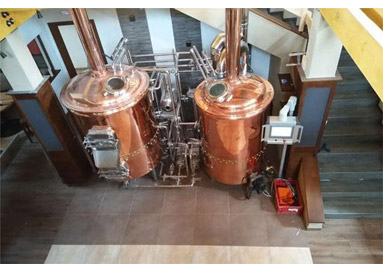How To Judge Microbrewery Beer?
Sniff, look, drink, swish, savor, swallow.
Throughout the United States-- certainly, throughout the world-- homebrewers have actually been holding competitions for over twenty years. Naturally, in order to have a winner, a person has to judge the beer. A company developed in 1985 by the House White Wine as well as Beer Trade Association and the American Homebrewers Organization trains and accredits homebrew judges. This team, currently an independent nonprofit company, is called the Beer Court Certification Program (BJCP), and it has more than 2,500 participants throughout the USA, Canada and several other countries.
Traditional 3 Vessel Brewhouse
Below's just how you can evaluate a Microbrewery following this system.
Bouquet/Aroma:
Quickly after the Micro Brew has actually been put, take a smell while the sniffing's excellent. In much less time than you assume, the unstable esters that comprise the beer's scent will be gone. What you're searching for are the leading scents of the beer. Is it sweet, sour, roasty, earthy, natural, flowery, citric or any kind of one of a number of various other fragrances? A solid malt existence will be pleasant. Sourness as well as tartness usually, but not always, are an outcome of a contaminated beer. Roasty fragrances derive from baked grains, such as the highly roasted, unmalted barley used in an Irish stout. Various varieties of jumps impart natural, herbal, flowery as well as citric scents. Ales are often fruity. German wheat beers as well as many Belgian ales are yeasty as well as spicy.
Look:
Is the beer clear? Most beers are filteringed system and ought to be clear. Or is the beer over cast? Unfiltered wheat beers are expected to be put so that the yeast on the bottom of the bottle is stired and also poured into the glass. What shade is the beer? Each beer design has its own shade parameters: gold for pilsners, amber for many light ales, orangey-reddish-amber for Oktoberfests, black or near-black for stouts. Does the beer have a good sudsy head as well as excellent head retention, or is the head weak and also anemic? Does lovely shoelace cling to the sides of the glass or does the beer wash down the within the glass like dishwater?
Flavor:
Here you're trying to find a variety of features, many of them similar in meaning to the bouquet/aroma attributes. Is the main flavor one of malt (pleasant or roasty) or hops (earthy, organic, flowery, citric)? Does an added fruit take over the taste? Is the beer tart or sour? Wheat beers are commonly happily sharp. Many Belgian beers are tart or yeasty or hot or something completely different. How does the taste change from the impression into the center and to the surface? Is the finish a slam-bam "That's all individuals!" or does it linger with a particular taste?
Exactly how do all these flavors play off each other? In beer-judge talk, that's called "equilibrium." Is the equilibrium excellent, or does one flavor muffle all the others in a nasty program of brute strength? Just how well is the beer "conditioned," by which beer judges suggest the age of the beer and also exactly how the tastes have all come together? Is the degree of co2 enjoyable or overwhelming?
Our company also has Traditional 3 Vessel Brewhouse for sale , welcome to consult us.

评论
发表评论